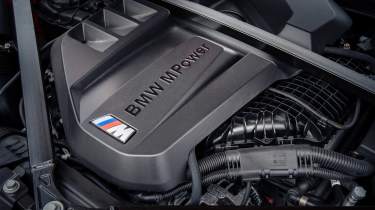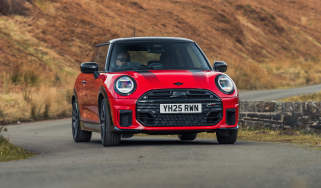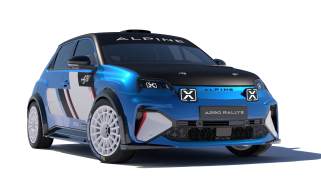BMW M2 – engine, gearbox and technical highlights
BMW’s S58 straight-six provides the grunt, harnessed by a shorter M4 chassis with a choice of manual or automatic
The M2 is built on a shortened variation of the current 4-series platform, with the same track width and suspension architecture as the M3 and M4 and S58 3-litre twin-turbo straight-six engine.
In the M3 and M4 Competition, it’s had a bump in power to produce 523bhp (at 6250rpm), up 20bhp from before, with the same 479lb ft torque figure that sticks around for 230rpm longer (between 2750 and 5730rpm). The 2025 M2 gets a similar boost, to a not-exactly-paltry 473bhp (at 6250rpm) and 406lb ft, which also hangs around for longer in the rev range (between 2650 until 6130rpm). That torque figure rises to 443lb ft in the automatic car.
The auto is an eight-speed ZF torque-convertor that’s fitted as standard, with the six-speed manual lingering on as an option in the UK (albeit for a cheeky £1925). With a wheelbase shortened by 110mm, it’s a sawn-off shottie version of an M4.
The wheelbase is still a touch longer than that of the previous F87 M2 (it’s a smidge larger in every dimension than before), but it’s still a compact car by modern standards – and a tricky one for rear passengers to clamber into and out of if they are on the tall side. The optional carbonfibre roof lops 6kg off the kerb weight, although it’s still relatively porky for a small, two-wheel-drive car, however, quoted at 1705kg with the manual gearbox and 1730kg if you stick with the auto.
Adaptive dampers are standard and evolved from the units fitted to the M3 Touring. These work with stiffer front and softer rear spring rates than the M3/4 to account for the M2’s shorter wheelbase, difference in kerb weight and weight distribution, along with bigger 19-inch front and 20-inch rear wheels than the F87 M2. Optional Michelin Pilot Sport Cup 2 tyres improve on the M2’s track credentials, and torque is transferred to the rear wheels alone via an electronically-controlled limited-slip diff. Michelin’s Pilot Sport 4 S tyres are the standard fit.




